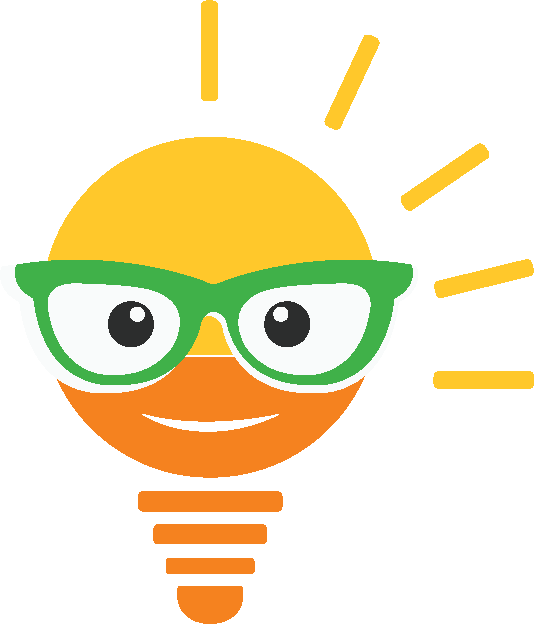Unlock the Secret to Successful College Application Essays

I started working as a college admissions counselor in 1987.
Since then, I've helped thousands of students get into their dream schools and receive scholarships.
Want to know a secret?
I (pretty much) use the same three college application essay templates every time.
Keys to Success: Authenticity & Simplicity
Early in my career, I didn't appreciate the value of simplicity.
Back then, the essays I encouraged my students to write were complex and confusing. I was asking students to be someone they weren't. I failed my students repeatedly with horrible advice.
But after a few years of mixed results, I realized that these essays were a way to reveal a student's true self, not a way to mask it by being an over-the-top version of someone else.
During that time, I found simple works best, and I have found simple frameworks that are both easy to write and something admission officers love.
Here are three of my go-to templates:
Template 1: Your (Hero's) Journey

As a college admissions counselor, I've seen it all regarding essays. I find that students will generally write "love letters" to themselves: I have perfect grades, took 15 AP courses, and got 1500 on my SATs on my first try, blah, blah, blah.
Colleges already know your grades & test scores, but they don't know what sort of person you are. They don't know your character or experiences that shaped you into who you are now.
To help them get to know you, use the Hero's Journey Framework to tell your story. This template allows you to showcase your growth and development as you navigate challenges and obstacles.
Joseph Campbell's Hero's Journey Format vs. Your Hero's Journey Format
A writer and mythologist named Joseph Campbell developed the Hero’s Journey, a narrative structure that shows how the hero transforms through their adventure. It is a common plotline in many myths, stories, and legends. The Hero’s Journey has these key steps:
- The Ordinary World
- The Call to Adventure
- Refusal of the Call
- Meeting the Mentor
- Crossing the Threshold
- Tests, Allies, and Enemies
- Approach to the Inmost Cave
- The Supreme Ordeal
- Reward (Seizing the Sword)
- The Road Back
- Resurrection
- Return with the Elixir
That's a lot of steps & you don't have that many words to write to properly cover them all.
The hero’s journey archetype is a common narrative pattern that involves a protagonist who goes on an adventure, faces challenges and temptations, learns a lesson, wins a victory, and returns home transformed. It is based on the idea that every story, myth, or legend shares a universal structure that reflects the psychological and spiritual development of the hero.
But if you had to pick just a few to write about, here are the 3 most important steps from the 12 stages of Campbell's Hero's Journey:
- The Call to Adventure (you are living your life until something happens that forces you to change by facing a challenge or temptation)
- The Supreme Ordeal (you go through a struggle versus internal and/or external forces; ultimately, you learn a lesson from the experience)
- Return with the Elixir (you come through the challenges a better version of yourself, with experiences that will set you up for a lifetime of success)
Why It Works
The Hero's Journey Framework is a powerful way to connect with the reader and leave a lasting impression. By following this template, you can show the reader how you have become stronger and more confident due to your experiences.
And the experiences that are most telling & interesting are the ones that show you:
• failed at something
• doubted your abilities
• went along with something you knew was wrong but afraid to stand up for yourself.
Plus, it's a unique approach that sets the essay apart. So, if you're struggling to find the right words consider using the Hero's Journey template to tell your story.
Template 2: ABS Framework (The 3-Act Story Structure)

ABS stands for AND, BUT, and SO. Each of these conjunctions helps connect your story by increasing the context (AND), revealing conflict (BUT), resolving the conflict & satisfying your reader (SO).
ACT I (Context)
Great stories make you feel like you are living the experience. This is done by introducing the key players AND the world they live in.
ACT II (CONFLICT)
A compelling story reveals the characters' conflict. Everything in the characters' lives is going smoothly, BUT something causes a problem.
This something, the conflict, fits neatly into five categories. This story can be about you versus:
- Nature
- Society
- Character
- Technology
- Yourself
ACT III (CONCLUSION)
The resolution provides the reader with an outcome SO we know what happened.
As exciting or painful as the conflict is, you must finish the story with an ending satisfying the reader. Your ending shouldn't be a Disney or fairytale ending, but it should wrap things up.
Here's an example of the ABS Framework, 3-ACT Story Structure Framework (this is not the essay, just the concept):
ACT I (CONTEXT)
I was struggling with a math teacher, who I thought treated me unfairly, AND he was ruining my chances to get an A in an important class for college admissions. AND confidence was at an all-time low, AND my struggles in math were affecting my other grades and my relationship with my friends and family.
ACT II (CONFLICT)
BUT I realized that my conflict wasn't against the teacher or math. It was really against my fear of failure (I was blaming the teacher for my struggles). I am now faced with an internal struggle to confront my fear of failure and to stop blaming others for my issues.
ACT III (CONCLUSION)
SO I created a plan to improve my grade. I met with my teacher, realized that he was trying to help, not hurt me, and I started asking for help from the school counselor to understand how to confront my fear of failure. I ended the class with a B, made a great relationship with the teacher, and that teacher, who I once hated but now respect, wrote me a college recommendation letter. I now know I can face my fears and am less afraid than I once was.
Remember, Context, Conflict, and Conclusion!
Template 3: Be Different By Being Truthful

Another template I love is the Be Different by Being Truthful. This template encourages students to be honest in their writing rather than trying to impress or please the admissions committee. Students can showcase their unique perspectives and stand out by sharing personal experiences, thoughts, and feelings.
Here's a sample framework for the Different But Truthful template:
1. Introduction: Authenticity Declaration
Start your essay by acknowledging that you will be honest, not just impressive. This might include mentioning a unique aspect of your personality or sharing a personal anecdote that establishes your authenticity.
Example: "I'm not the perfect student you may expect to read about in an application essay. I'm the student who struggled with AP English and didn't make the varsity soccer team on the first try. However, my journey is no less significant."
2. Body: Real Stories of Triumph or Failure
In this section, you must narrate personal experiences that might not seem outstanding at first glance but have shaped you. It could be overcoming a small unique challenge, an instance of failure, or a simple yet meaningful success. Make sure to reveal your thought process and emotions during these experiences.
Example: "My struggle with English made me understand the value of perseverance. I didn't ace the class but I learned the art of interpreting complex texts. Not making the soccer team taught me resilience. When I finally wore the varsity jersey the following year, it was a victory sweeter than any other."
3. Reflection: Lessons and Growth
Reflect on what these experiences taught you and how they contributed to your growth. What unique qualities or perspectives did these experiences help develop? This part should make clear that despite the lack of grand achievements, your experiences have been formative and valuable.
Example: "My journey, filled with tiny wins and losses, made me stronger and more determined. I've learned that the road to success doesn't always follow a straight line, and that's fine."
4. Conclusion: The Authenticity Promise
End with a statement that connects your past to your future, promising to bring the same level of honesty, grit, or any other characteristic you highlighted, to the college you're applying to.
Example:
"In college, I'll keep showing this resilience, learning from my mistakes, and being myself, just like I did throughout high school."
Remember, the admissions committee is looking for honest and relatable stories, not just a list of achievements and accolades (the love letter). So, don't be afraid to be vulnerable and share your true self in your essay.
Conclusion
Using well-structured essay templates, like the Hero's Journey, ABS Framework, and the Be Different by Being Truthful, can reduce the stress of writing these difficult essays and be a game-changer in the college application process. But, some students still struggle to get their story out in a compelling way. No matter which template you use, you must tell your story, no matter how big or small the event or activity you write about. The key is to give the colleges an idea of who you are behind the numbers on the application.
But writing great essays is just part of the process.
If you are struggling, check out my course, How to Pick the Perfect College, where I teach you to write memorable essays and search for the college that Matches your skills and Fits your emotional needs.
Stay connected with news and updates!
Join our mailing list to receive the latest news and updates from our team.
Don't worry, your information will not be shared.
We hate SPAM. We will never sell your information, for any reason.

